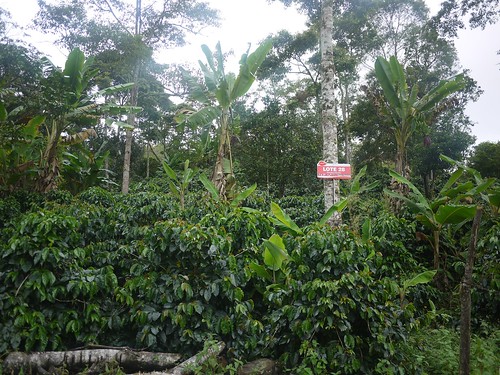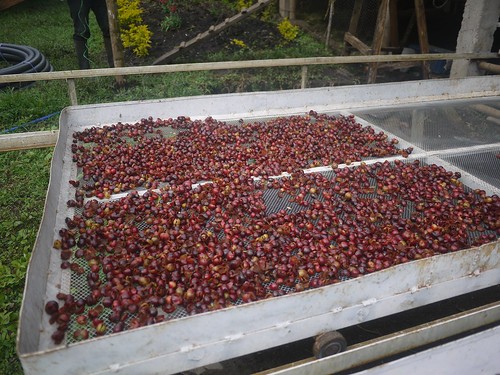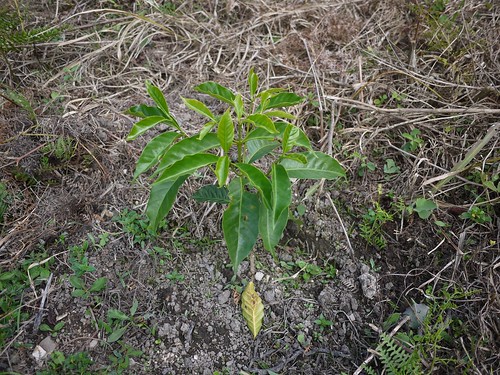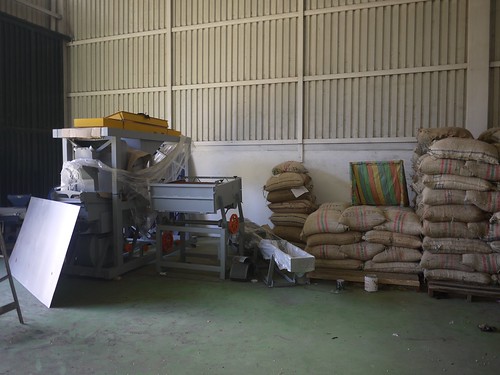Since I only had a few days to spend at Finca Tamana last week partly because of the protests that were going on, there was little time to run a lot of experiments on the farm. To be honest, we have done so many trials on fermentation and processing in the past and in my opinion, and from my experience, the only thing we are adding when doing prolonged fermentations, etc, is more pulp flavour to the coffee. Since I am not a big fan of ferment flavour in coffee, we have for now setteled on dry-fermenting until the coffee is finished (12-16 hours) then washing and soaking the coffee. This leaves the coffee with no present pulpy flavours and a cleanliness that I really like. We will install a mechanical demucilage machine in the future so that we don’t have to think about fermentation ever again.
Shade grown vs. Sun grown.
So what else is there to experiment with? Well, there is a lot.
Now we are focusing more on the farming aspects of increasing the quality. We will (as mentioned in an earlier blog post) soon start working with Yara on researching different fertilizers and their impact on cup quality. I am also interested in testing shade grown coffee vs. Coffee grown under full sun on this farm. Since Finca Tamana is located in the mountains there is very few days when they have 100% sun. There are always clouds and scattered rains here. That is why many farmers grow their coffee under full sun with no shade trees. Elias has some coffee under shade right behind his house, so we decided to separate this coffee and see if it tastes different from the sun grown. Unfortunately there was not much coffee in this lot due to rennovation of he trees, but we managed to get a little bit of coffee processed on the new hand de-pulping machine.
We will have to do a more strict trial in 2015 when the lot will be in full production again. I am curious to measure the density, uniformity and quality and also quantities coming out of this lot compared to a similar lot without shade close by. My thesis is that the shade grown coffee is tasting better. This is based on cupping scores I have been giving the coffee coming partly from this lot before.
Cascara and other products
I want to see if we can produce some more products on the farm that Elias can sell. There is an increasing amount of baristas who are requesting products like Cascara (dried coffee husk) for using in signature drinks, etc. I therefore decided to do a test to make 2 different cascaras. One that is taken straight from the de-pulper, washed with clean water and then taken to the dryer. The other batch we washed in clean water before we fermented it for two days in a bucket. Then we dried it on a raised bed. Unfortunately the fermented sample got moldy as there was not enough sun present to dry the cascara quickly enough. We will do another trial one day when there is more sun and less clouds. I think it will be interesting to see if there is a big difference in flavor and if fermenting the cascara will give any benefits, which I highly doubt. Either way, we might have to install a small mechanical dryer in the future to do small batches of cascara as the weather on the farm is so unpredictable.
Castillo.
During the November harvest in 2013 we managed to get a small sample of Elias’ new Castillo cultivar. I am not sure what kind of Castillo it is (there are many different ones) but the flavour was promising. This harvest will be the first proper harvest of Castillo at Finca Tamana and I am very excited to taste it after it has been properly processed and dried as the sample I tasted last harvest was poorly processed, yet it still tasted really good.
More micro lots in the future.
I was also very pleased to see that the seeds we planted last year of 3 different cultivars was finally planted in the soil at the farm. The small baby shrubs will take about 2 more years of growing before they produce coffee. I can’t wait to taste it. The new cultivars are bigger shrubs than the Caturra that is traditionally grown here in Colombia. Therefore we have decided to plant them 2,5 meters apart as opposed to the normal 1,3 meter apart on the farm. This will reduce the amount of trees per hectare from 4600 to 1600. The idea is to try to replicate the pruning techniques that they use in Kenya, where they allow for 3-4 stems to grow after stomping the trees. (You might now assume that we have planted some Kenyan cultivars.) This allows for continuous production from year to year and also more space, nutrients and light for each tree to absorb. It will also make it a lot easier for the pickers to pick the coffee which I hope they will appreciate.
Microlots requires different logistics
One of the big issues when we are making small microlots (20 – 300 kg lots) is that it is very difficult to get milled and cleaned for export. Fortunately the cooperative that Elias is a member of, called Coocentral located in Garzon, has invested in a new micro mill. The mill is able to handle lots down to one 70kg bag (or even smaller) and is due to be finished by this harvest. They have also started a project with 70 farmers in their territory where they are teaching the farmers how to better harvest and process their coffee. The goal is to sell the coffee for a better price than the commodity price because of it’s superior quality. The coffees will be kept separate and sold as micro lots. The whole project is inspired by the work we have done at Finca Tamana and Elias is the role model farmer for the project. My colleagues at Nordic Approach and I will systematically be cupping these lots to give feedback to the farmers as well as purchasing coffees for clients. Nordic Approach will for sure be offering lots from this project by the end of the summer.
I am super exited about this project because it is important for the whole region to get more recognition and for the farmers to get better prices for their coffee. It helps create more jobs and stability in the region and will hopefully prevent riots and protests that I am seeing here at the moment from happening too often.






